Khmer terminology
Structures & characters in ancient Khmer temples
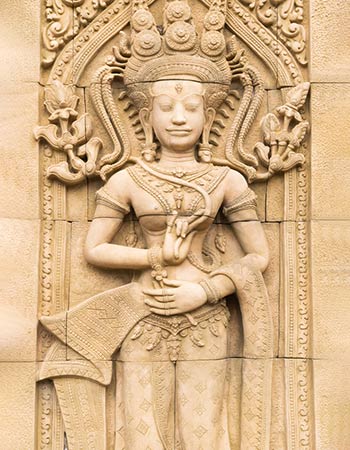
Apsara
An apsara is a celestial nymph from Buddhist and Hindu mythology, usually depicted dancing and smiling. They can be found in great numbers in bas reliefs of several Angkor temples, such as Angkor Wat and the Bayon. The apsaras emerged during “the churning of the ocean of milk”, a famous storey from the Hindu epic Mahabharata.
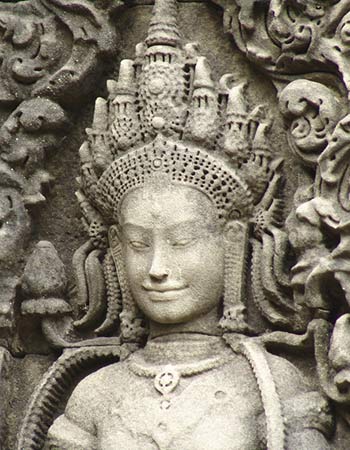
Devata
A devata or thewada is a female celestial being, usually depicted standing. Devata stems from the Sanskrit word “deva”, which translates to divine. As apsaras, they are often found depicted in bas reliefs of Angkor temples such as the Preah Khan and Angkor Wat.
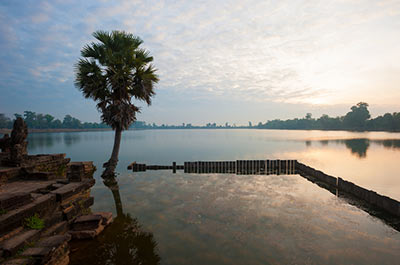
Baray
A baray is a giant, man made water reservoir. It is not known with certainty what the purpose of the barays was. Archaeologists believe that they were part of the irrigation system or served a religious purpose. At the center of the barays the Khmer constructed a temple on an artificial island. The largest baray in Angkor is the West baray, which was more than 7 kilometers long and 1.7 kilometers wide.
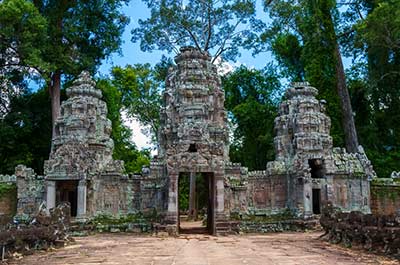
Gopura
An entrance gate or entrance pavilion in the wall that surrounds a temple. Gopuras are often impressive structures with carvings on lintels and pediments. Many of the large temples have a gopura in the center of each side of its surrounding walls.
Pictured here are the entrance gates to the Preah Khan temple.
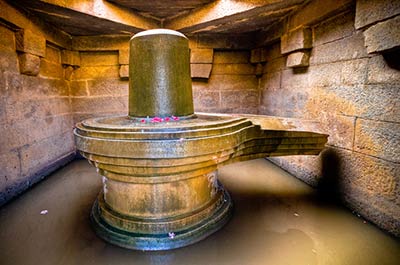
Linga
The linga or lingam is a symbolic representation of the Hindu God Shiva, a stone representation in a cylindric shape. The linga was placed in the central sanctuary of a Khmer temple to be worshipped.
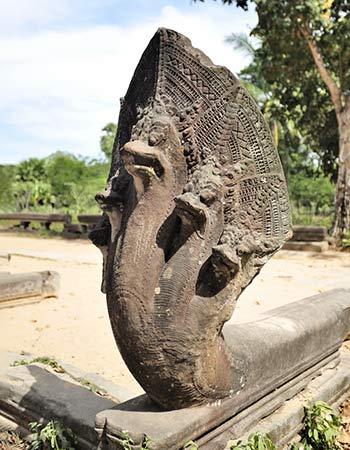
Naga
A snake from Buddhist and Hindu mythology often depicted with multiple heads. In many Angkor temples they are found on Naga bridges or carved on balustrades and lintels. The King of the Nagas is Mucalinda, who protected the meditating Buddha from torrential rains with its hoods.
You can see several large seven headed Naga snakes lining the paved causeways of the Bakong.
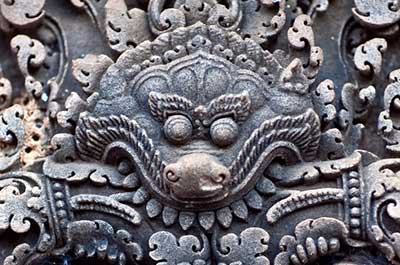
Kala
A fierce monster with large teeth. Only the head with an upper jaw is depicted, no lower jaw. In Angkor Kalas are often found carved on lintels and walls of temples.
Shown here is a bas relief of a Kala at Banteay Srei.
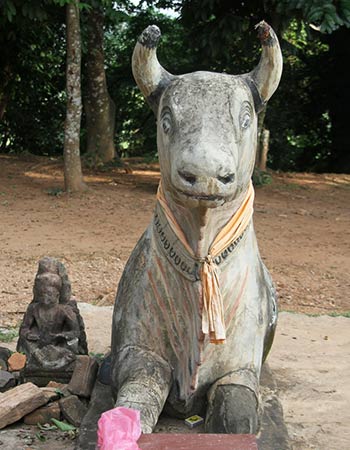
Nandi
The sacred bull, the mount of the Hindu God Shiva. Three statues of Nandi are found in front of the towers of the Preah Ko (“the sacred bull”) temple.
Pictured here is Nandi at Phnom Bakheng.
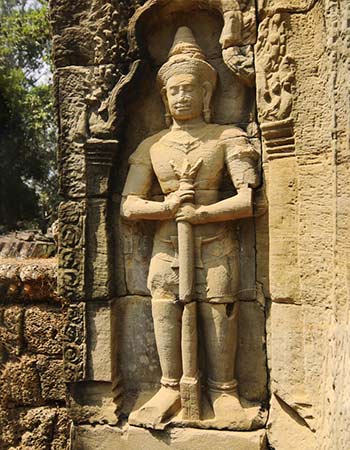
Dvarapala
Armed guardians. They are usually found in pairs, one on either side of the gate protecting the entrance to the temple.
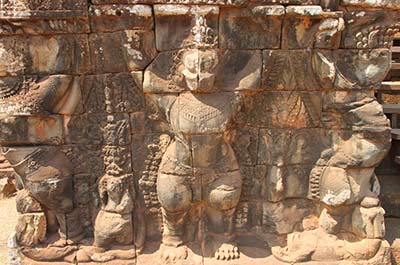
Garuda
A creature from Hindu and Buddhist mythology, half bird, half man. In Hindu mythology Garuda is the mount of Vishnu. In Angkor they are often found in carvings on walls and lintels.
Shown here is a carving of a Garuda at the Terrace of the Elephants.
Naga bridge
A bridge with balustrades carrying Naga snakes. Naga bridges served as the symbolic representation of the crossing from the world of man into the world of the Gods.
Dharmasala
A Dharmasala or “House of Fire” is a rest house with fire where travelers could shelter. It is known from the Ta Prohm stele there were 121 rest houses with fire on the main roads from Angkor to several important towns in the empire.
Stele
A stone table inscribed with information about the temple, such as its founding date, the King who founded the temple and the Gods to who the temple was dedicated.
Banteay
Citadel, e.g. Banteay Srei, Banteay Kdei.
Phnom
Mountain, e.g. Phnom Bakheng (mountain temple).
Prasat
Tower or temple, e.g. Prasat Kravan, Prasat Suor Prat.
Preah
Sacred, e.g. Preah Khan, “the Sacred Sword”.
Thom
Big, large, e.g. Angkor Thom, “large city”.
Angkor
City, e.g. Angkor Thom, “large city”.
Srei
Woman, e.g. Banteay Srei, “the citadel of women”.
Prei
Forest, e.g. Banteay Prei, “Forest citadel”.
Mount Meru
The center of the universe in Hindu and Buddhist cosmology. The Angkor “mountain temples” like the Bakong and Phnom Bakheng were build to be a representation of Mount Meru.